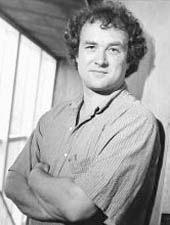Bencze, G., Bencze, S., Rivera, K. D., Watson, J. D., Orfi, L., Tonks, N. K., Pappin, D. J.
(August 2020)
Mito-oncology agent: fermented extract suppresses the Warburg effect, restores oxidative mitochondrial activity, and inhibits in vivo tumor growth.
Sci Rep, 10 (1).
p. 14174.
ISSN 2045-2322
Abstract
Mitochondrial dysfunction and significant changes in metabolic pathways accompany cancer development and are responsible for maintaining the tumor microenvironment. Normal mitochondria can trigger intrinsic apoptosis by releasing cytochrome c into the cytosol. The survival of malignant cells highly depends on the suppression of this function. We validated that A250, a highly purified fraction of fermented wheat germ extract (FWGE), increases the carbon flux into the mitochondria, the expression of key elements of the Krebs cycle and oxidative phosphorylation (OXPHOS). The increased respiratory chain activity is related to the mitochondria's ability to release cytochrome c into the cytosol, which triggers the apoptotic cascade. The 68% tumor growth inhibitory effect observed in the murine melanoma study is related to this effect, as proteomic analysis validated similar changes in mitochondrial protein levels in the isolated tumor tissue samples. Blood count data indicated that this effect was not accompanied by general toxicity. This study is significant, as it shows that a highly concentrated form of FWGE is an effective agent that increases normal mitochondrial functionality. The lack of hepatotoxic and general toxic effects makes A250 an excellent candidate targeting mitochondria function in cancer therapy.
| Item Type: |
Paper
|
| Additional Information: |
2045-2322
Bencze, Gyula
Bencze, Szilvia
Rivera, Keith D
Watson, James D
Orfi, Laszlo
Tonks, Nicholas K
Pappin, Darryl J
Journal Article
Sci Rep. 2020 Aug 25;10(1):14174. doi: 10.1038/s41598-020-71118-3. |
| Subjects: |
organism description > animal
organs, tissues, organelles, cell types and functions > cell types and functions > cell functions > apoptosis
organs, tissues, organelles, cell types and functions > cell types and functions > cell functions
organs, tissues, organelles, cell types and functions > cell types and functions > cell types > cell line
organs, tissues, organelles, cell types and functions > cell types and functions > cell types > cell line
organs, tissues, organelles, cell types and functions > cell types and functions > cell types > cell line
organs, tissues, organelles, cell types and functions > cell types and functions > cell types
organs, tissues, organelles, cell types and functions > cell types and functions > cell types
organs, tissues, organelles, cell types and functions > cell types and functions > cell types
organs, tissues, organelles, cell types and functions > cell types and functions
organs, tissues, organelles, cell types and functions > organs types and functions > liver
organism description > animal > mammal
organs, tissues, organelles, cell types and functions > organelles, types and functions > mitochondria
organism description > animal > mammal > rodent > mouse
organs, tissues, organelles, cell types and functions > organelles, types and functions
organs, tissues, organelles, cell types and functions > organs types and functions
organs, tissues, organelles, cell types and functions
organism description > animal > mammal > rodent |
| CSHL Authors: |
|
| Communities: |
CSHL labs > Pappin lab
CSHL labs > Tonks lab
CSHL Cancer Center Program > Cellular Communication in Cancer Program |
| Depositing User: |
Matthew Dunn
|
| Date: |
25 August 2020 |
| Date Deposited: |
20 Nov 2020 22:07 |
| Last Modified: |
29 Jan 2024 20:16 |
| PMCID: |
PMC7447799 |
| Related URLs: |
|
| URI: |
https://repository.cshl.edu/id/eprint/39782 |
Actions (login required)
 |
Administrator's edit/view item |






